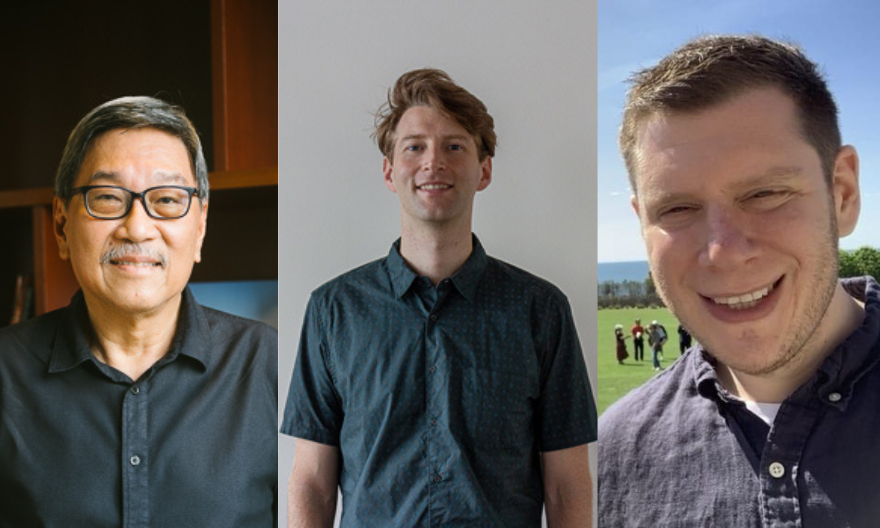From graphene hydrodynamics to nano-rockets, Yale-NUS students contribute to innovative scientific research
 While building a rocket might sound like a dream or something that one would read in a science fiction novel, Eun Jung Min (Class of 2019) had the opportunity to experiment with synthesising micro and nano-rockets as a student researcher working with Yale-NUS College Assistant Professor of Science Stanislav Presolski.
While building a rocket might sound like a dream or something that one would read in a science fiction novel, Eun Jung Min (Class of 2019) had the opportunity to experiment with synthesising micro and nano-rockets as a student researcher working with Yale-NUS College Assistant Professor of Science Stanislav Presolski.
“I worked with Professor Presolski on synthesising micro/nano rockets that are biocompatible (or compatible with living tissue). Nanobots and similar delivery systems have been receiving attention lately, for their potential application in the medical and pharmaceutical fields. However, many of these studies pointed to nanobots having limited control over the motions of the systems. We hope to resolve these issues and synthesise the functioning delivery system so that this can be applied in various ways,” Jung Min explained.
“We have identified some potential compounds for the encapsulating agents and fuels. In time to come, we hope to incorporate photochromic molecules, compounds that react to light, to the rocket and achieve control over the directional motion of the nano-rocket.”
A sophomore who intends to major in Physical Sciences with a concentration in Chemistry, Jung Min had decided to take up the position as a student researcher to learn more about experimental chemistry.
Beyond that, Jung Min also learnt about how to approach and carry out his research systematically. “Working in an undergraduate laboratory has allowed me to learn more about a systematic way of approaching research. From formulating questions to drawing out experimental procedures, I had to be more independent in my learning.”
The most exciting moment during his research was when his first micro-rocket moved in water. “It felt so surreal and I remember banging the table in joy.”
Another sophomore who was also involved in scientific research with a Yale-NUS faculty is Nilotpal Chakraborty (Class of 2019). Nilotpal worked with Assistant Professor of Science Shaffique Adam on the hydrodynamics of graphene.
“Over the summer, I was working with Dr Shaffique Adam, his post doctorate student and a research assistant to understand certain characteristics of the hydrodynamic behaviour of graphene. Graphene is a thin layer of pure carbon and its discovery sparked huge excitement in the physics and technology community. It has properties which makes it extremely useful for a wide variety of applications. In fact, the scientists who discovered graphene were awarded the Nobel Prize,” Nilotpal shared.
“The reason this project was interesting is because hydrodynamics (the mechanics of fluid motion) is not supposed to be applicable to systems like the electrons in graphene. Yet, experiments showed that they are applicable to graphene and to understand and utilise a material, one must first understand how its particles behave. This project sprung out of the first official meeting I had with Dr Adam and his post doctorate student last year and it was a very exciting project for me to work on.”
Even though he is still an undergraduate, Nilotpal was heavily engaged in many aspects of the research. “I was mostly involved with generating code in the programming language MATLAB, and going through papers to identify important ideas and trying to implement them in order to come up with our own theory.”
As he intends to major in Physical Sciences and is considering a career in academia, research was something that Nilotpal knew he wanted to get involved with in college but did not have the chance of doing in high school. Hence, he decided “not to waste any time at all” and applied for the position in the first semester of his freshman year.
The most memorable moment for him was meeting renowned physicist Giovanni Vignale (known for his contributions to density functional theory) on campus. “I was reading a paper by this famous physicist and then suddenly Dr Adam told me that the professor was right next door and visiting his department. We then had a three-hour meeting with Professor Vignale, which was amazing!”
This story is part of Latest@Yale-NUS series on students’ involvement in research projects. Read the first story here and watch this space for more research stories!




